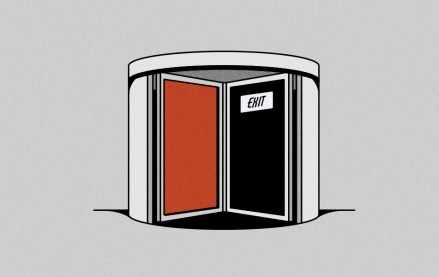Save 50% on a 3-month Digiday+ membership. Ends Dec 12.
Why electric vehicle brand Rivian is thinking long-term amid economic uncertainty

As economic uncertainty and talk of recession intensifies, automakers face an uphill battle in everything from tariff impacts on production costs to fluctuating consumer spending in response to inflation.
The uncertainty has left marketers shaken because it’s historically meant cuts to marketing budgets. But as one of the biggest spending categories in media and marketing, auto makers aren’t ready to take their foot off the gas just yet. To put some numbers to it, automotive media spend in the U.S. is expected to hit $31.77 billion this year, up from $29.48 billion in 2024, according to eMarketer.
In January, Digiday reported auto marketers aren’t slowing ad spend in light of tariff tension. Recently, Digiday caught up with Denise Cherry, vp of marketing at Rivian, an electric vehicle company, about how the car brand is navigating economic headwinds, why it’s launching its first ever brand campaign now, and planning for the long term amidst uncertainty.
This interview has been lightly edited for clarity.
Where is Rivian at with its marketing goals right now?
It’s a really pivotal time in our business where we are making that step change. We currently sell 50,000-60,000 vehicles a year. In the next couple years, we want hundreds of thousands of vehicles a year. That step change in mass-market appeal and the audience that we need to create, and the brand awareness that we need to create, we really want to start to set those roots now.
Rivian is opening its second manufacturing plant in Georgia, making it another U.S.-based Rivian factory at a time when tariffs are taking a real toll on automakers. How does that show up in marketing messages?
All of our factories are here. We employ 15,000 people here in the United States, but people don’t know that about us. How do we actually start to communicate that? We’re currently very much a homegrown business. We’re working on some pieces and some points of view on that.
Regarding economic headwinds and uncertainty, marketers spent Q1 in wait-and-see mode. Q2, marketers are feeling the effects of said tariffs. How are Rivian’s budgets and messages shaping up with that in mind?
It’s up and down every day. But what’s really nice–and part of the beauty of so much of what we do being in-house–is we have that built-in flexibility. We’ve got an incredible analytics team that has lots of instantaneous dashboards and technology for us to start to review so we can, in real-time, make those adjustments as we need to.
Obviously, we pay a lot of close attention to those things. But as a company, we take an incredibly long-term view. Whether there’s an immediate headwind or an immediate tailwind, we don’t let that distract from the very long-term goal. For us, that goal right now is how we start to make sure that we are ready for R2 [Rivian’s newest electric vehicle] in ‘26.
So where does Rivian’s marketing spend go from here? How is investment shaping up?
You will see this “Real Rivian Adventures” [Rivian’s first brand campaign], on CTV, YouTube. We’ll probably do some broadcast, but we haven’t finished the media buys for those yet. You will see, obviously social, paid and owned, you’ll start to see some really interesting stuff from our in-store activations as well.
We are a direct-to-consumer brand, so we can control the entire piece. We don’t have dealerships, so we can continue that brand storytelling and that brand narrative from what you see on your television to what you see on your screen all the way through to what you experience in-person, all the way past that into ownership.
So many marketers are hesitant to lock in long-term deals with talk of an economic recession. How’s Rivian navigating that?
It’s less about what’s the next quarter and it’s much more about making sure that we know in a year’s time, two year’s time, three year’s time, when we are trying to sell more vehicles, that people know who we are.
Because we are still also very much a startup, we haven’t signed any annual media buys ever. It’s not this campaign, specifically. It’s not even market related. It’s just more that we’re so new to this, we have never done that.
More in Marketing

Pitch deck: How Amazon is recasting Twitch as a core part of its CTV pitch
Amazon is positioning Twitch as a defining asset in its CTV ambitions.

Netflix transforms former mall department stores into experiential venues
The location in Dallas opens this week, and one at the King of Prussia mall near Philadelphia opened last month.

Future of Marketing Briefing: AI has created a new talent paradox in programmatic agencies
The job isn’t execution anymore. AI handles that. The job is judgement.








